Recently I was asked in an email, what fountain pen I would recommend for a beginner. She mentioned that she had traditional taste, enjoyed good quality and style and wished to start with a cheaper pen, costing no more than say 20 to 30 euros. She wished to use it with a Leuchtturm 1917 notebook. “Is it possible to get a good quality pen for that price?”, she asked.
Happily, the answer to the last question is yes. There are numerous fountain pens on the market in this price bracket, from a wide range of brands and with a host of different attributes.
Ideally, before making recommendations, I would find out a little more such as her previous experience of fountain pens, how she holds her pens, her writing size and style, whether she has any preferences as between brands, materials (plastic or metal), filling systems and the pen’s size and weight, and so on.
In the absence of such information to narrow down the field, I made a number of assumptions and the following can be general advice only and is based upon my own experience, likes and dislikes.
From the mention of the Leuchtturm notebook, I assume that the pen may be used for journaling but may also be enjoyed for letter writing, occasional notes and other general tasks: in short, a general purpose pen.
Also, the suggestion of “starting with a cheaper pen”, implies that she wishes to try an entry-level pen first and then later progress to the next level. This is sensible to ensure that she likes using a fountain pen before investing too much money and secondly, to spend some time with a beginner’s pen and so appreciate the improvements when moving on.
A beginner’s pen will have a stainless steel nib. I suggest a medium nib to start with (assuming average sized handwriting). As for filling systems, the pens in the following selection are almost all cartridge-converter pens. That is, they are filled by inserting a plastic cartridge of ink but can also be adapted for filling from a bottle, by inserting a “converter,” typically an ink reservoir with a twist mechanism for drawing up ink.
Cartridges are quick, clean and convenient for refilling on the go. The downside is that it is generally more expensive to buy ink in cartridges, (especially if the pen accepts only its own branded cartridges, as with Lamy and Cross for example). There is also the plastic waste. Bottled ink gives the benefit of being available from a variety of brands and in a huge number of colours.
The one other filling system represented in my list, is the piston filler (TWSBI Eco) which draws ink directly into the barrel and can be filled only from a bottle.
If possible, it is best to visit a shop to see the pen before buying but this is not always practical, not least because of the current lockdown and so buying online may be the only option.
With all these caveats in mind, here is my personal selection, in no particular order, with a few thoughts on each:-
Lamy Safari

Perhaps the most obvious choice, the Lamy Safari is widely available, in a range of colours with new special edition colours coming out every year. These are tough, plastic pens with quick, snap-on caps and are a decent size even for larger hands. Thanks to state of the art engineering, good quality control and testing, the nibs are well finished and write smoothly, straight out of the box. Replacement nibs are available in various widths and are easy and inexpensive to replace. The pens cost around £18.00 in the UK
The downside for some is that the grip section has two facets, pushing you to adopt a symmetrical grip between finger and thumb, centred above the nib which is not so comfortable if you prefer to rotate your nib inwards as you write (as I do). This puts some pen enthusiasts off, although most whom I know, probably own or have owned at least one. Also you are restricted to Lamy cartridges. A Lamy converter can be bought separately.
An aluminium version of the pen, in a range of colours, is available at around £25.00.
Cross Bailey Light
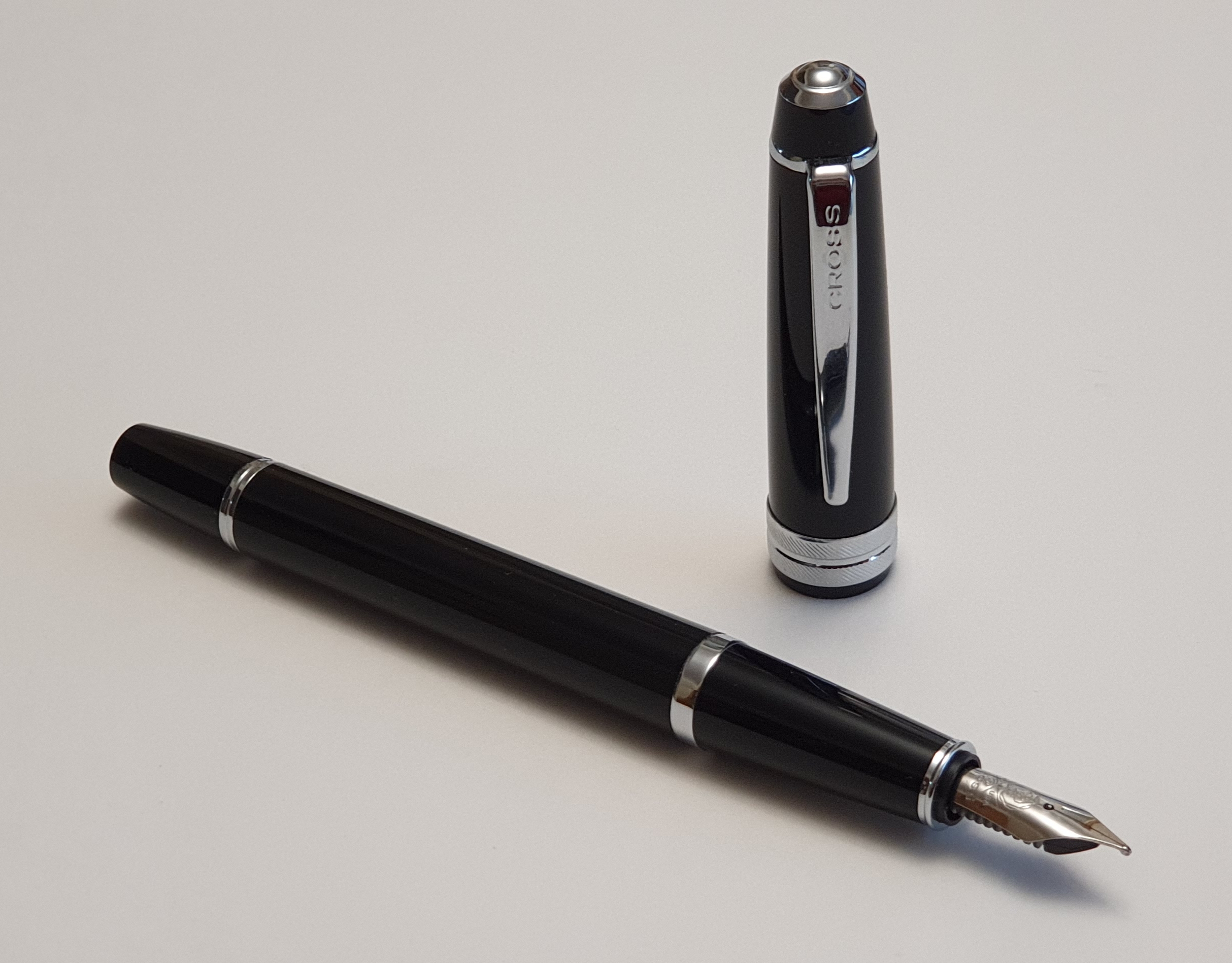
This new pen from Cross appeared in 2019, as a plastic version of the popular, heavier lacquered metal Cross Bailey. This is a cartridge-converter pen, taking Cross proprietary cartridges or else a Cross converter (the push-fit version, model 8751). It is a simple, traditional style pen of a good, medium size and proportions. The plastic cap can be “posted” (pushed on the back of the pen) for added length and weight. This looks a more adult pen than the Safari, having no facets on the grip. The pens are sold in sealed packs, with medium nibs. These offer a firm writing experience, good for note-taking and faster writing. Personally I try to pick out pens with nib tines with a slight glimpse of daylight between them, which mean good ink flow and effortless fast writing.
The downside is that Cross cartridges are rather expensive. But with the pen costing £20.00 in the UK plus a converter for £7.00, you are still under £30.00 in our currency. I am a big fan of these pens finding them very comfortable and reliable.
Faber-Castell Grip
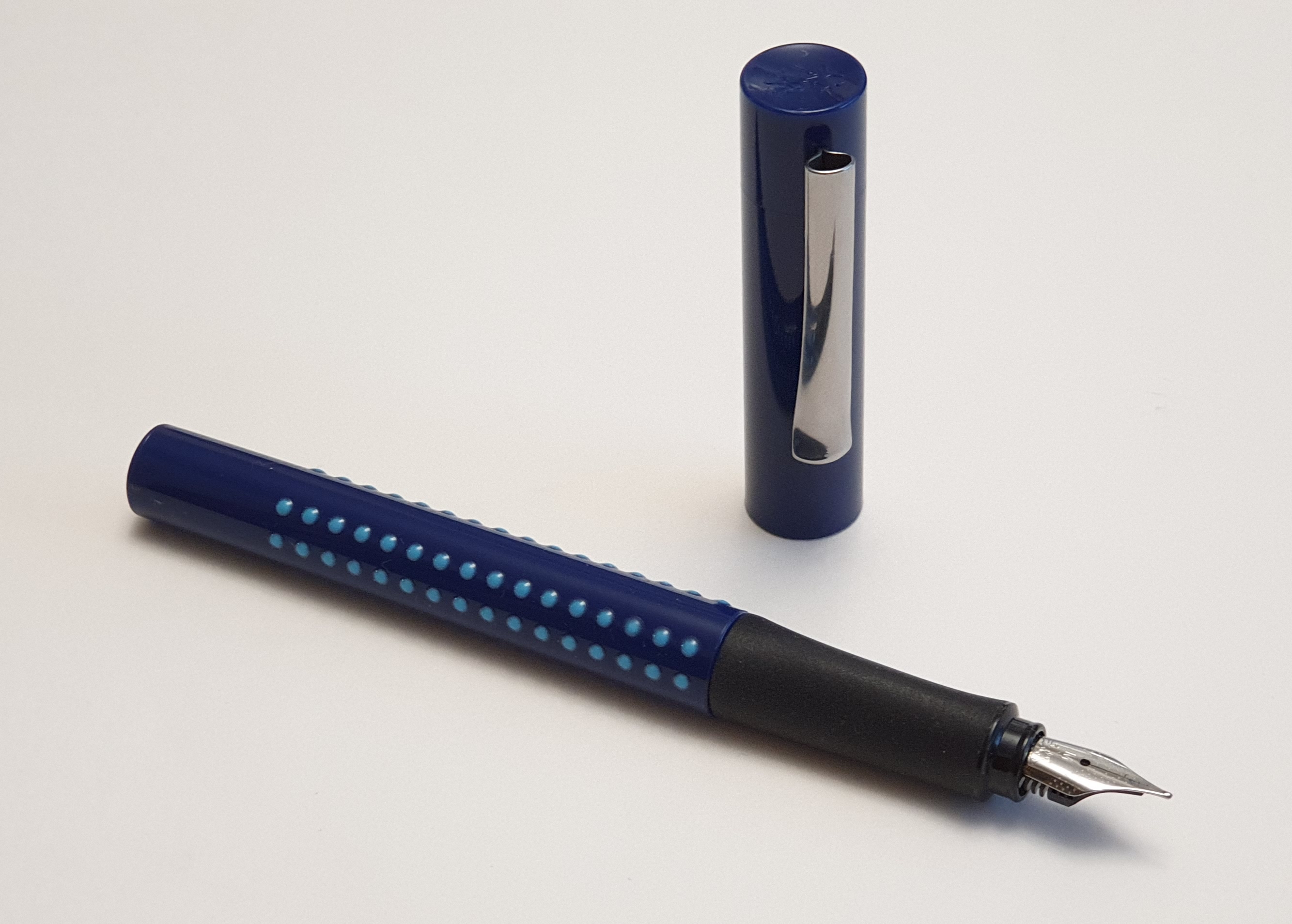
This is another fairly traditional syle pen, perhaps rather under-rated here and certainly less prevalent in the shops than Lamy and Cross brands. However, this pen has a delightful smooth, steel nib. If bought online, from Cult Pens for example, there is a choice of nib in extra fine, fine, medium and broad widths. I have only tried the medium nibs but imagine that a broad would be silky smooth. The pen features a rubber ergonomic grip with subtle, smooth edged facets for your thumb and forefinger to rest on. At around £15.00 these are excellent value. They also have the advantage of accepting standard international cartridges, which are readily available from numerous brands and in a vast array of colours.
For the price there is little to say against this pen. It is a good size, light in weight and the cap can be posted if desired but this makes it rather too long at 17.5cm.
Lamy Nexx
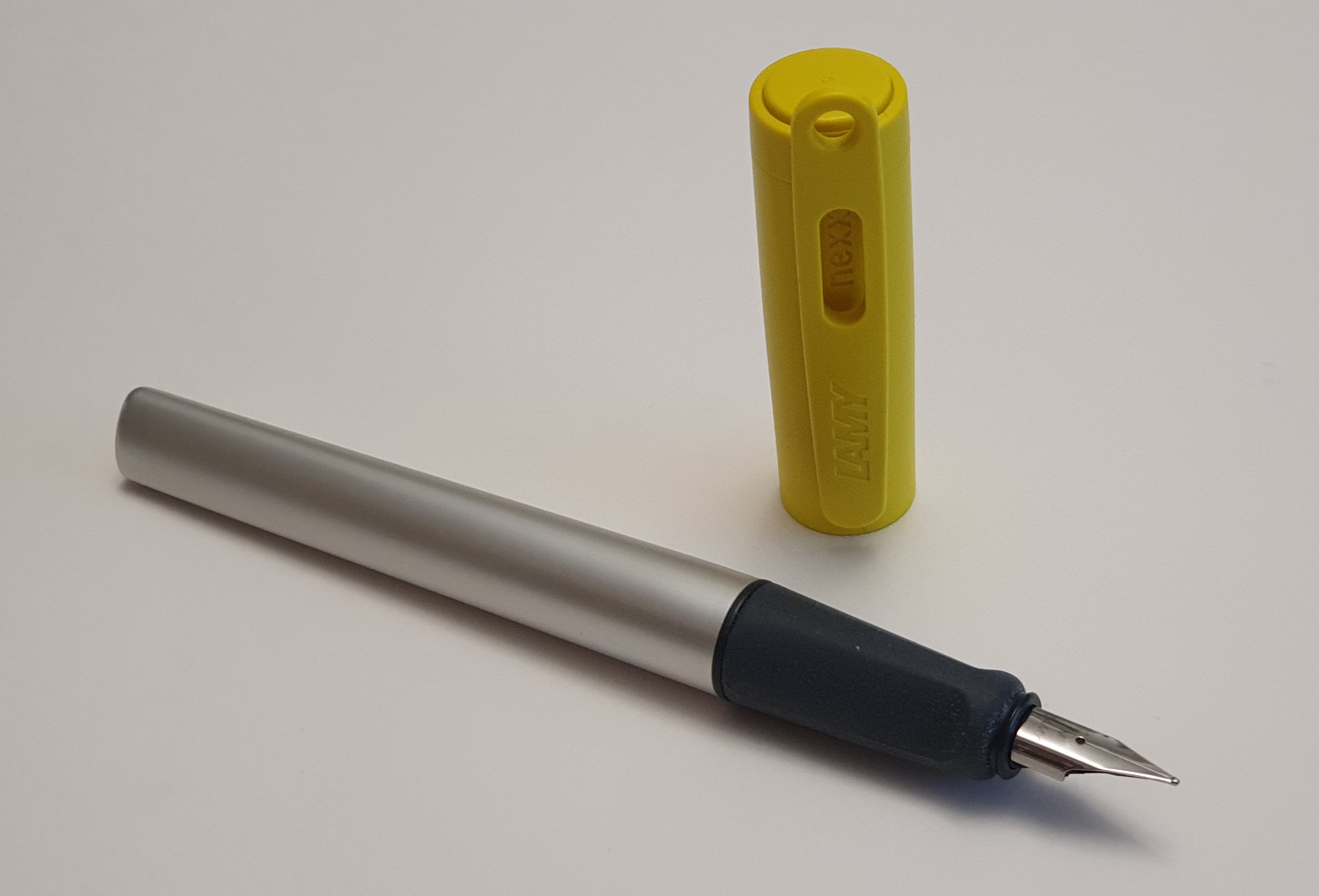
The Nexx seems to be rather overlooked here, being over-shadowed by the ubiquitous Safari. However, it is a tough workhorse pen. It has the same nib as the Safari and AL-Star, but features a wider, rubber grip and an aluminium barrel which blends gradually from being cylindrical to a rounded triangular shape at the end. It has a tough plastic cap in a variety of bold colours. Again, like the Safari, it will need Lamy cartridges or the appropriate Lamy converter. The price here is around £19.00, similar to a Safari.
The downside of this pen for me is that the rubber grip makes it slightly harder to make small adjustments to the angle of rotation of the pen as you write: you need to lift the pen off your fingers before you can twist it in your hands. Secondly, there is an unusual clash of materials, as between the plastic cap, rubber grip section and aluminium barrel. This, plus the unusual shape of the barrel makes for an interesting tactile experience. Personally, I am not keen on rubber grips or triangular barrels and yet inexplicably, taken as a whole I am impressed by the pen. I have had mine for only a few months. It could not be described as traditional in style.
Kaweco Perkeo
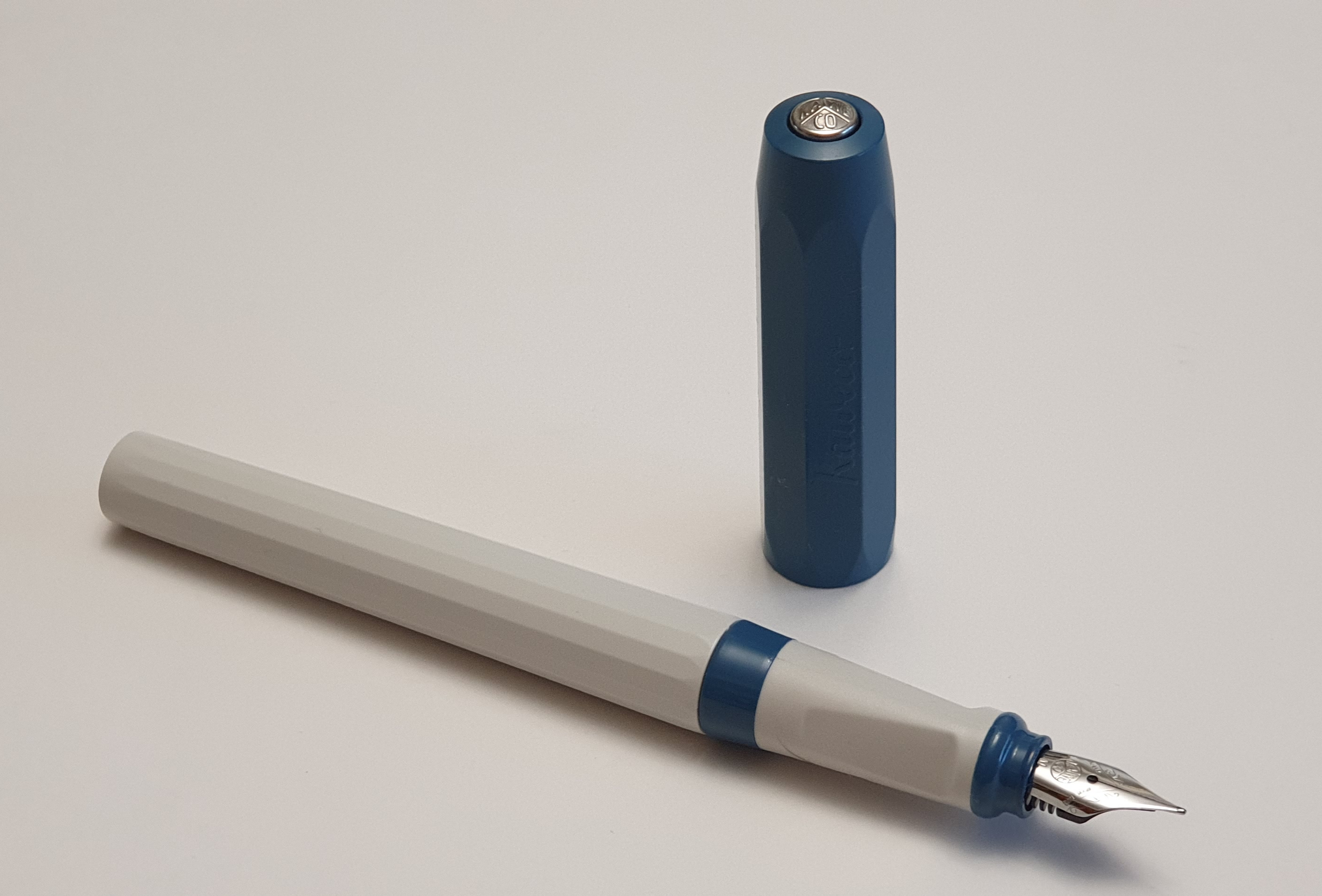
The Perkeo is another cartridge-converter pen, in a range of colour options and an All Black in tough plastic and multi faceted cap and barrel. The grip does have some facets for your finger positions but it is not rubber and these are less obtrusive than on the Lamy Safari. Personally I grip the pen higher than the facets and so they do not interfere with my grip. The pen is a good size, whether posted or not. I enjoy the Kaweco nibs which are slightly softer than the Lamy Safari nibs. The pens are sold in clear plastic packs with either a medium or fine nib. I have bought quite a few of these in both widths. The medium nibs are great for general use but I also like the fine nib version to use with black ink which is very precise with a pleasant feedback. The pens cost around £16.00 here. They take standard international cartridges and are supplied with four blue cartridges of the lovely vibrant Kaweco blue.
The downside perhaps is that the pen is not traditional in style and looks like a whiteboard marker pen. There is no pocket clip. Also, the build quality can be a bit variable and some people have had complaints with the nibs. Aside from such quality control issues I think they are great value and provided you get a good one, the writing experience can be delightful.
TWSBI Eco
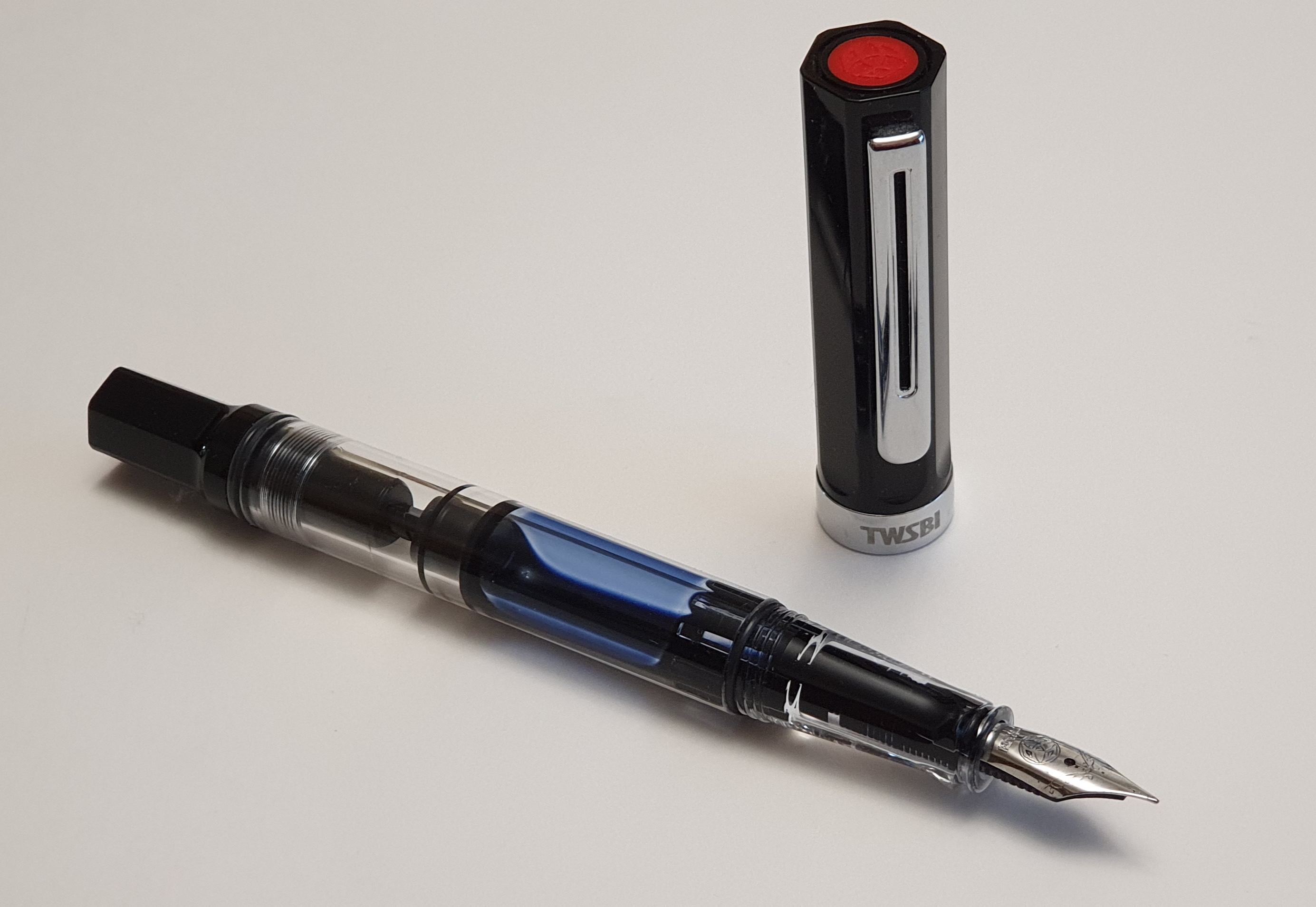
My final suggestion is different from all the above in that it is a “piston filler” (bottle only) pen, which means a much larger ink capacity than any cartridge. Secondly, it is a “demonstrator” pen meaning that it is made of a clear plastic so that you can see the nib and feed and filling mechanism. Once filled, you can also see the ink sloshing around. Nibs are available in a range of widths. The pens start from around £28.00 here increasing for some of the different colour options. It is also the only pen in this selection with a screw on cap.
TWSBI pens are appreciated by enthusiasts, not only for their quality and value but also because they can be disassembled for cleaning. TWSBI supplies its pens with a wrench to unscrew the piston. The nib and feed can be pulled out and are “friction fit” for ease of changing, cleaning or maintenance, although none of this is strictly necessary if you prefer not to tinker with it. TWSBI even supplies each pen with a small container of silicone grease to lubricate the piston.
Conclusion
There are numerous other pens that I could have included but have left out to keep the list managable. As it is, I have already stretched the brief rather beyond the traditional. Any pen enthusiast would have his own opinions and this is clearly subjective and tastes differ.
I have not included Parker pens at this price level. A Parker Vector is well within the budget but rather too slender in my view and not one of my favourites. Many people might recommend the Pilot Metropolitan as a starter pen, also within budget, but I do not find them very comfortable and the nibs are very fine. Then there are Chinese pens such as the Wing Sung 601 or the Wing Sung 699, both well inside this price range and of traditional design but although great value, I think that they are not everyone’s idea of a beginner’s pen.
My own preference, would be for the Cross Bailey Light with medium nib and converter which is a good, traditional pen of quality and style. Although having said that, everybody should have at least one Lamy Safari, preferably yellow.
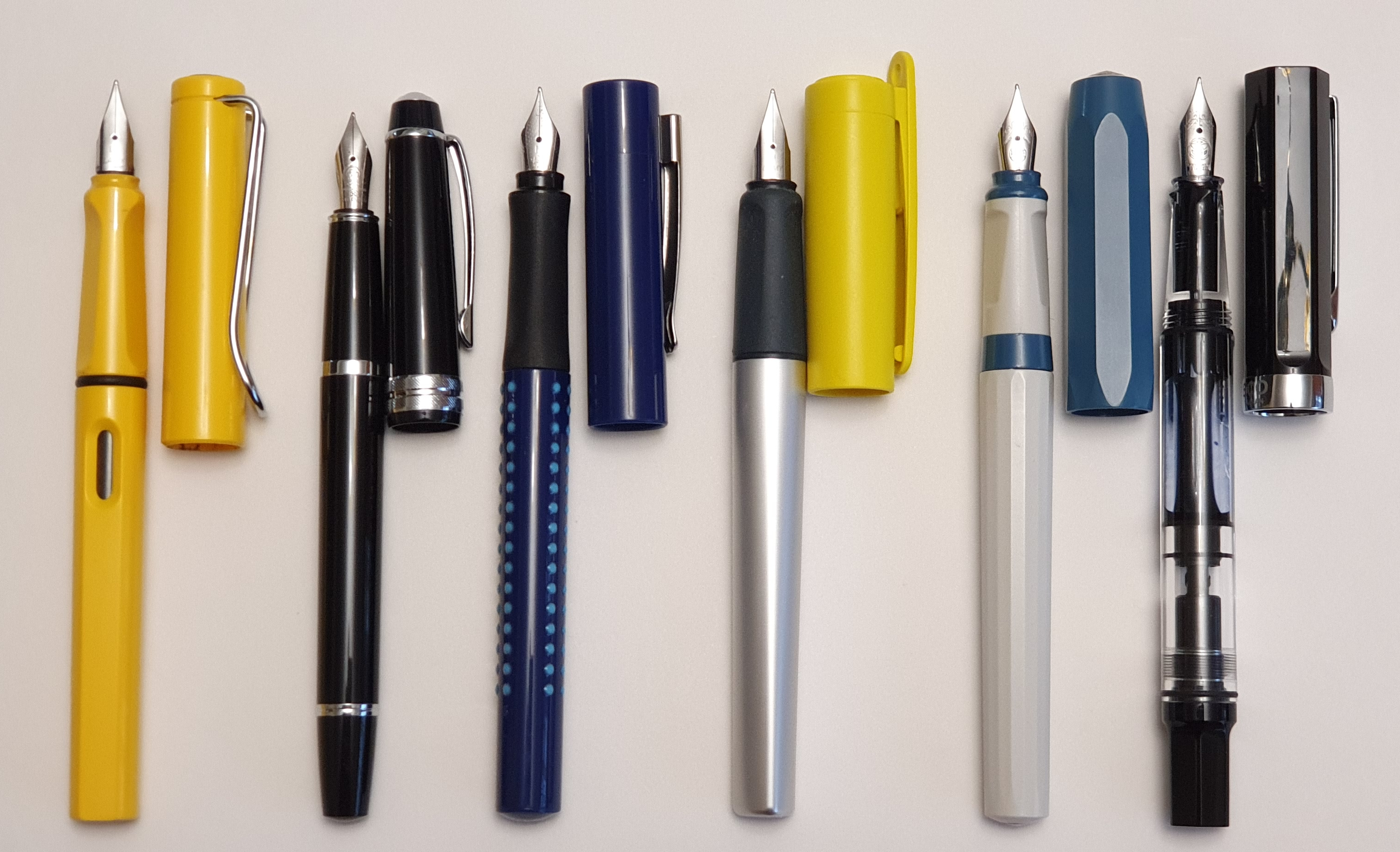

I like the pens you recommended; seems like a good range for a beginner to choose from. I also love the Safari in Yellow – I have one, and it’s so cheery to look at! One recommendation I’d make to a beginner is to take her hand size into account. The pens you’ve recommended are pretty much average size, which is a good place to start. But if I could give my beginner self a little hint, I’d say to go easy before you buy too many really small or really large pens. I bought too many large pens before I figured out that I preferred smaller pens, having small hands. It’s a good idea to practice with the average sizes, then try out other sizes one at a time to see if you like them.
LikeLiked by 1 person
Thank you! Yes, hand size is another good factor to take into account in terms of what pens will be comfortable.
LikeLike
Thank you for an interesting review of “starter” pens. I used to recommend the Lamy Safari or Al-Star, but now I’ve got to prefer the Twsbi Ecos, with either a medium or stub 1.1 nib. They are such good writers, light to hold in the hand but still with some weight/presence, and with a huge ink capacity. You once did an interesting review of the Manuscript Clarity, which persuaded me to buy one straightaway- perhaps that could be an additional recommendation?
LikeLiked by 1 person
Thank you for reading! Yes, the TSWBI Eco pens are great, for beginners and more experienced users too. They are such good value for a piston filler and demonstrator with a good range of nibs.
Yes, I was forgetting the Manuscript Clarity which I reviewed in August 2017. Currently I am a bit biased towards the Cross Bailey Lights as I use them a lot. The black and the grey versions are particularly elegant. It does not look like a £20.00 pen!
LikeLike
When lock-down ends and Rymans opens again, I must have a look at the Cross pens!
LikeLiked by 1 person
What a good and thought-provoking list. My recent experiment with the Waterman Allure at £18.00 has been really positive, and it’s one I wouldn’t hesitate to recommend to a beginner. It has the advantage over Lamy and Cross of taking the International cartridge type. I have tried two low-end Faber-Castell pens and didn’t like either, so the Waterman would take place of that if I were writing the list. I heartily agree with your Cross recommendation and if we focus on ink cartridges, I don’t think the Cross ones can be beaten on ink quality – just a shame they don’t make cartridges in all the colours of their bottled inks.
LikeLiked by 1 person
Thank you! I was not aware of the Waterman Allure but have just enjoyed reading your excellent post on it. They look very good value at £18.00. Talking of Watermans, I liked the look of the Waterman Embleme also on Cult Pens but am yet to see one in the flesh.
LikeLike
Thank you for this informative piece. Reassuring to see trusted Lamy and Cross in your list of recommendations. I am drooling over the yellow Lamy even though I have a Coral version which I indulged myself with Coral ink by the same manufacturer. I long for the day when this ink will be available, once more, in bottles.
I would like to recommend, in the category of beginner’s pens, Pilot 78G which comes with a 22k gold-plated, stunning smooth nib. The pen is light in weight and ink is drawn up into a rubber sac. Mine has been used regularly and flown long distances with me for almost 7 years without any issues from the moment I received it. I recommend all beginners to experience this beautifully crafted nib and use this as a point of reference when moving on to acquire higher end pens.
LikeLiked by 1 person
Thank you! I was not familiar with the Pilot 78G but note that this is an elegant, traditional-style fountain pen with a simple and reliable squeeze-bar filling mechanism and comes in burgundy, green or teal. It appears that they are not readily available here in the UK which is a pity as I would like to try one.
LikeLike
Thanks for posting a really good and well written article. Two other pens to consider might be the Lamy ABC with its A nib for learners and the Pilot Kakuno. Both are nice writing, ergonomic pens that can be acquire very cheaply.
LikeLiked by 1 person
Thank you very much! Yes, these are two more good possibilities for beginners although, like some of those in my list, they are less traditional in style. I have not used a Kakuno myself but am aware that others recommend them as a starter pen.
This is a topic that triggers a range of opinions and all have their merits.
LikeLike
Hats off for tackling a thorny topic. I’d take the Eco and Perkeo from that line-up any day. I’ve yet to have a problem among the 5 that I own, and my Perkeo is a wonderfully smooth and wet writer.
LikeLiked by 1 person
Thank you! Yes it is a topic on which everyone has his own opinion. The great thing is that there is such a wide choice of inexpensive pens out there.
LikeLiked by 1 person
great list!
LikeLiked by 1 person